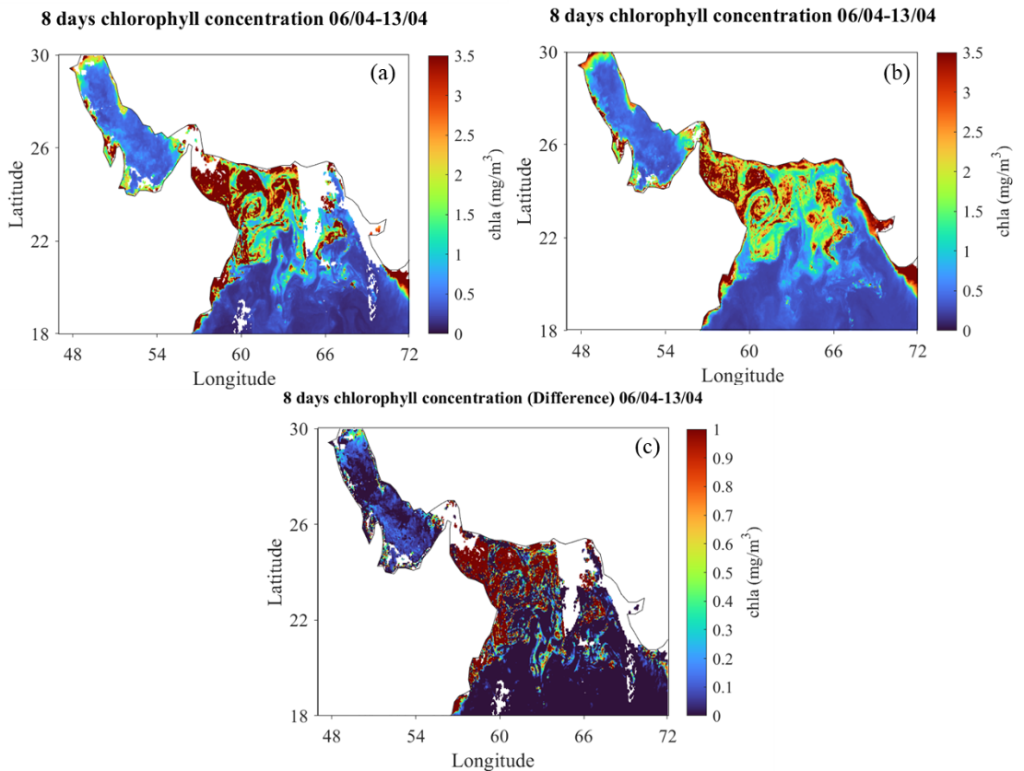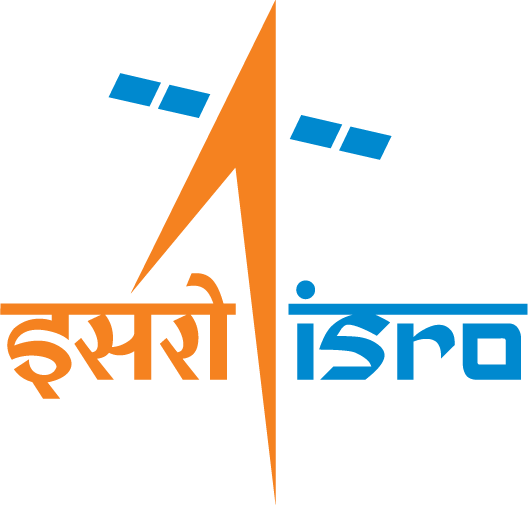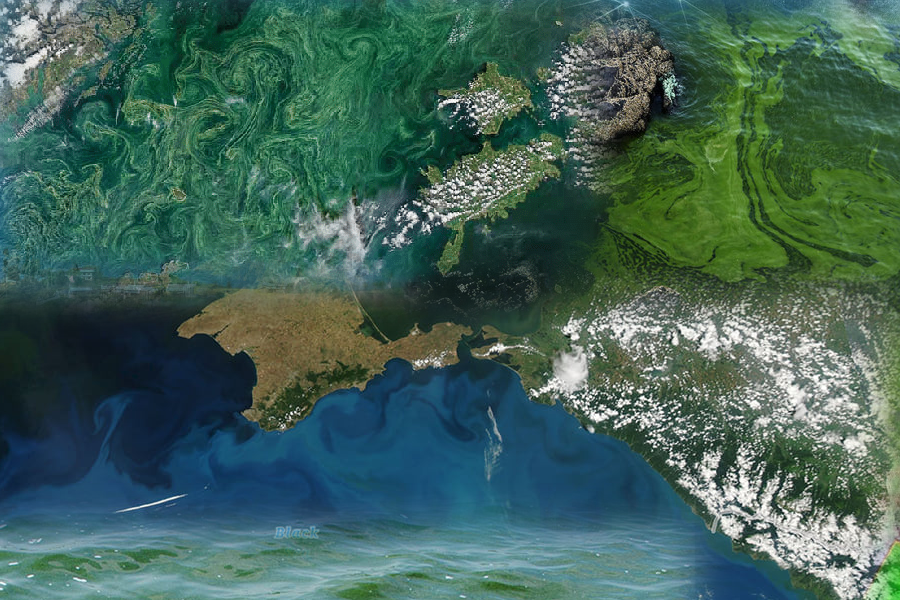In February 2024, National Aeronautics and Space Administration (NASA) launched the most advanced Earth-observation satellite namely PACE (Plankton, Aerosol, Cloud, ocean Ecosystem), for the better understanding of ocean productivity and the impact of global warming induced climate change. The mission carries a hyperspectral radiometer along with multi-angle polarimeters. The Ocean Color Instrument (OCI) is a hyperspectral imaging radiometer gives the coverage extends from 315 nm in the ultraviolet to 895 nm in the near infrared spectrum at 2.5 nm resolution. OCI also includes 7 bands in the shortwave infrared spectrum from 940 nm to 2260 nm. The availability of newly launched high-resolution data can have important implications for the regional ocean bio-geochemical cycles. In this study, a comparison of MODIS and PACE derived chlorophyll product is made during April 2024 over the northern Arabian Sea.
The north Indian Ocean exhibits unique physical and biogeochemical properties caused by semi-annual reversing atmospheric and oceanic circulations driven by monsoonal forcing (Schott and McCreary, 2001). In the north Indian Ocean, the Arabian Sea is well known for its high productivity during the southwest monsoon as the along-shore wind, parallel to the coast, drives upwelling and increases primary production. During the winter monsoon, the convection process-induced vertical mixing occurs and subsequently the nutrients come upward into the photic zone, which in turn increases the growth rates of phytoplankton over the northern Arabian Sea (Madhupratap et al., 1996; Mohanty et al., 2021). The higher chlorophyll concentration can be observed in MODIS and PACE chlorophyll data on 6-13 April 2024 over the northern Arabian Sea (Figure 1). The chlorophyll data from PACE is characterized by the continuous spatial availability whereas there exists a gap in the MODIS data over the central northern Arabian Sea and the coastal regions. The spatial pattern of chlorophyll distribution from the PACE is exhibiting a smooth transition between high and low concentration regions as compared to the MODIS data. Another important aspect is the data availability in the coastal region which facilitates the better understanding of the coastal dynamics. The presence of large-eddy kind structure off the coast of Somali is better defined in the PACE data. The magnitude difference between the higher chlorophyll concentrations in MODIS as compared to PACE can be clearly observed in the difference plot (Figure 1C).

Figure 1: Spatial distribution of chlorophyll data from (a) MODIS, (b) PACE, and (c) difference (MODIS-PACE) over the north Arabian Sea.
References:
https://oceancolor.gsfc.nasa.gov
Madhupratap, M., Kumar, S. P., Bhattathiri, P. M. A., Kumar, M. D., Raghukumar, S., Nair, K. K. C., & Ramaiah, N. (1996). Mechanism of the biological response to winter cooling in the northeastern Arabian Sea. Nature, 384(6609), 549-552.
Mohanty, S., Raman, M., Mitra, D., & Chauhan, P. (2022). Surface pCO2 variability in two contrasting basins of North Indian Ocean using satellite data. Deep Sea Research Part I: Oceanographic Research Papers, 179, 103665.
Schott, F. A., & McCreary Jr, J. P. (2001). The monsoon circulation of the Indian Ocean. Progress in Oceanography, 51(1), 1-123.



